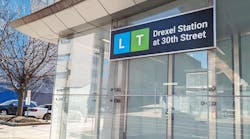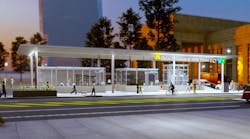SEPTA begins installation of SEPTA Metro wayfinding system
Southeastern Pennsylvania Transportation Authority (SEPTA) is moving forward with its new wayfinding system, with the start of the implementation phase. In conjunction with the new system, the new letters and symbols will now be used alongside existing terms.
The first signs have debuted as part of the opening for the new Drexel Station at 30th St. and the rollout will continue station-by-station during the next two years. The next location for new signage is 15th St/City Hall, a critical complex at the core of the system that research found is often confusing for customers to navigate. This will occur later in 2024, followed by other stations on the Broad Street Line.
SEPTA's goal is to make this transition as seamless as possible; however, riders should anticipate seeing both old and new signage during the transition period.
“The project will make the system easier to navigate for all passengers, regardless of language, ability or familiarity with public transportation,” said Leslie S. Richards, SEPTA CEO and general manager. “The new signage and wayfinding tools will help everyday riders take new trips and contribute to Philadelphia’s preparation as a host city for the World Cup in 2026.”
The SEPTA Metro improvements include:
- Use of easy to see and read colors, letters and numbers for each SEPTA Metro to improve visibility and clarity.
- New maps and signs that show bus connections and highlight SEPTA’s most frequent bus lines.
- New station entrance and exit signage to make the system easier to find.
- New “neighborhood maps” to help riders get oriented when leaving a station.
- Adjusting station names to eliminate duplicates, such as “Girard” (Broad-Girard) on the Broad Street Line and “Girard” (Front-Girard) on the Market-Frankford Line and merging complexes, such as “15th St/City Hall” instead of having two separate station names: “15th St” and “City Hall”
“We have spent four years conducting research, collecting feedback, engaging with the public and running temporary pilots to create a wayfinding system that caters to the needs of current and potential riders,” said Lex Powers, SEPTA director of service information design. “We appreciate the enthusiasm and contributions of our customers throughout the planning and research process.”
SEPTA plans to complete the Broad Street Line first, before moving on to the Market-Frankford Line, trolley lines and Norristown High Speed Line.
At the same time, SEPTA is improving its app, releasing more real-time information, working to vanquish “ghost buses” and piloting new, easier-to-read bus detour signage to align with the larger wayfinding improvements.




